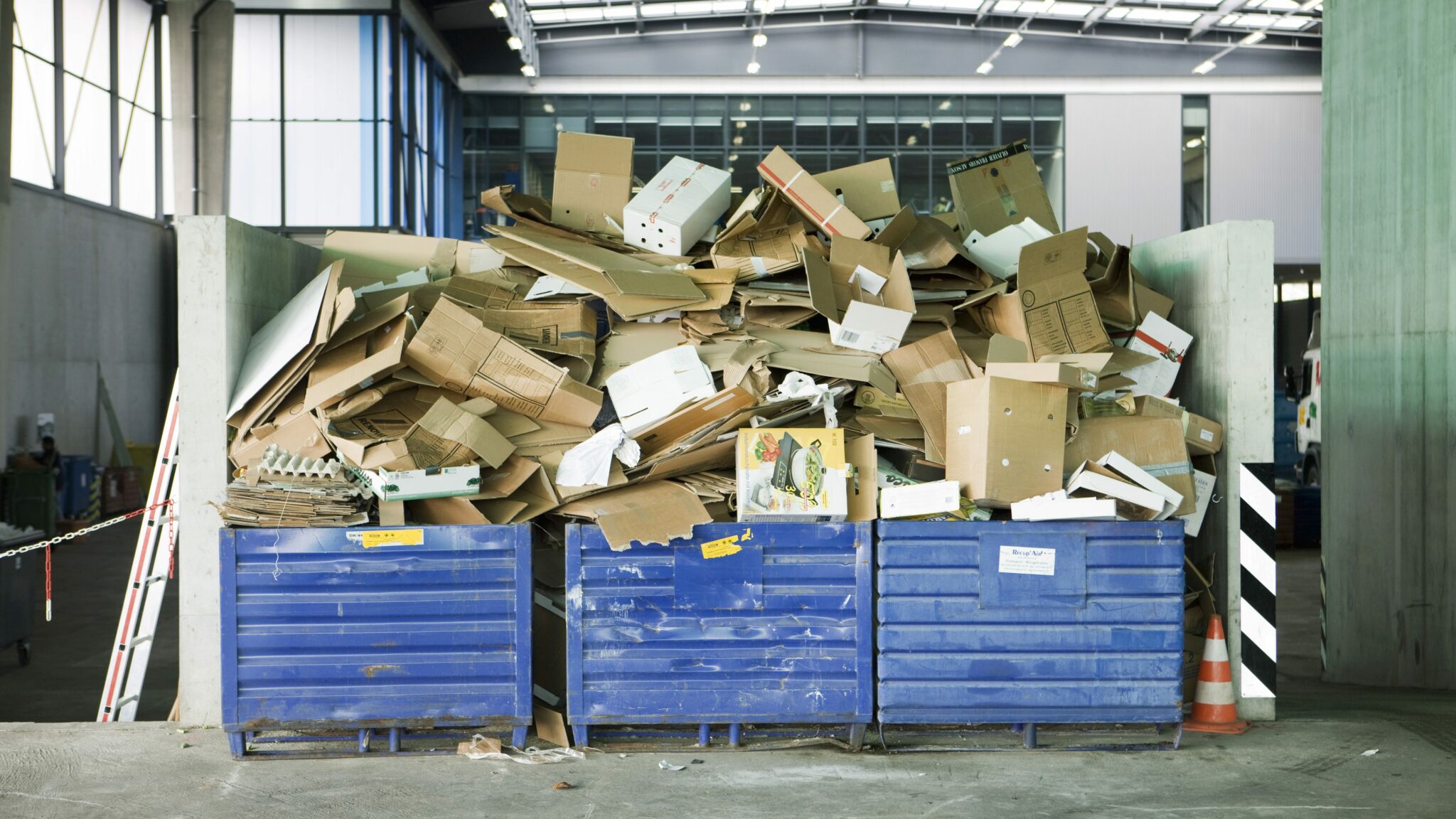Unpacking goods is a natural part of day-to-day work for grocery retailers. So natural, in fact, that most people rarely think of all the time spent on packaging waste – waste that also takes up valuable space in already limited storage areas and results in significant transport costs. Time and resources that could have been better spent on “real” work out on the shop floor…
Waste management takes time…
In the grocery sector, goods are often delivered at irregular intervals, and a lot in one go. Much of the store staff’s working day is spent unpacking these goods that are often packed in both corrugated cardboard and plastic. The time grocery retail staff spend dealing with waste could be significantly reduced by using the right tools. If less time is spent on waste management, staff can spend more time on the shop floor with customers.
Stores often ‘solved’ the problem by throwing everything into the same container to be collected on request, but waste incineration is expensive, so many stores prefer to sort their waste. There are still stores that are unaware they can be paid for their recyclable plastic and corrugated cardboard waste. This results in both lower incineration costs and payments for recycling. The problem is that manual processing – cutting and folding cardboard to separate the different types of material – can take up additional time.”
… Space
The storage areas in most stores are very limited – often due to the sky-high cost of floor space. This means the shop floor has to be given priority over storage. Add to that the need to process large quantities of bulky waste and you’ve got a problem on your hands. After all, the most important thing is that there’s space for goods.
More often than not, you just want to be rid of the packaging as quickly as possible to free up space. Packaging is thrown away uncompacted, which is not the best choice from an environmental perspective as all waste is then sent for incineration. Not only that, incineration has to be paid for, so the income mentioned earlier from sorting and recycling the waste is lost.
… And costs money
If staff fail to cut and fold the packaging when the goods are unpacked, the waste container will quickly fill up. This means the container will need to be emptied more often, which means more transports and more costs. This is a real waste when most of what is being taken away is actually just air. Too few people probably take the time to look at their transport costs before these get out of hand.
It is the rule rather than the exception that waste occupies an unnecessarily large amount of space in containers. When you start to wonder why the containers are being emptied so often, this is usually based on a gut feeling rather than actual calculations. By that point, containers may need emptying as often as once a day.
This does not have to be the case!
In addition to cost-efficiency requirements, large chains of grocery stores often have other pressures, both from management and from consumers, to process waste in an environmentally sustainable way. Many stores are now ISO certified, for instance, and the issue of waste management and CO2 emissions is growing in importance.
The way the company chooses to process its packaging waste depends heavily on the volumes of waste processed by the business. The greater the volumes, the greater the incentive to invest in a compactor or baler, for example. The solution chosen is based on the customers’ individual needs, such as waste volumes, available space, etc.
“There are solutions that are integrated into the façade of the building that enable customers to dispose of whole boxes through a hole in the wall. This saves time in that you do not have to go outdoors, and space because the machine is located outside. It is also possible to choose a product with a practical size so that it can fit indoors – there’s a wide range of sizes to choose from.
Final advice for those who feel that resources are being stretched due to the time, effort, and cost of waste management to sit down and take a look at the options:
Find an experienced and established supplier of balers and compactors. If their products are manufactured in-house, this is a bonus, as it gives you quick access to spare parts and product expertise. Of course, a good reputation is important, so extensive experience is an advantage. Speak to your colleagues in the industry and find out whether they are using equipment manufactured several years ago – this is a sign of good quality.
Four advantages of balers and compactors for the grocery sector:
- Efficient management of goods and waste, which ensures order in limited storage areas.
- One machine does the job instead of having staff cut, fold, and process the material.
- Both financial and environmental benefits in that waste is turned into a resource. The material is a recyclable raw material and does not need to be incinerated.
- The compaction machine becomes a small recycling station which can sort material into different fractions, which simplifies the division of materials.


